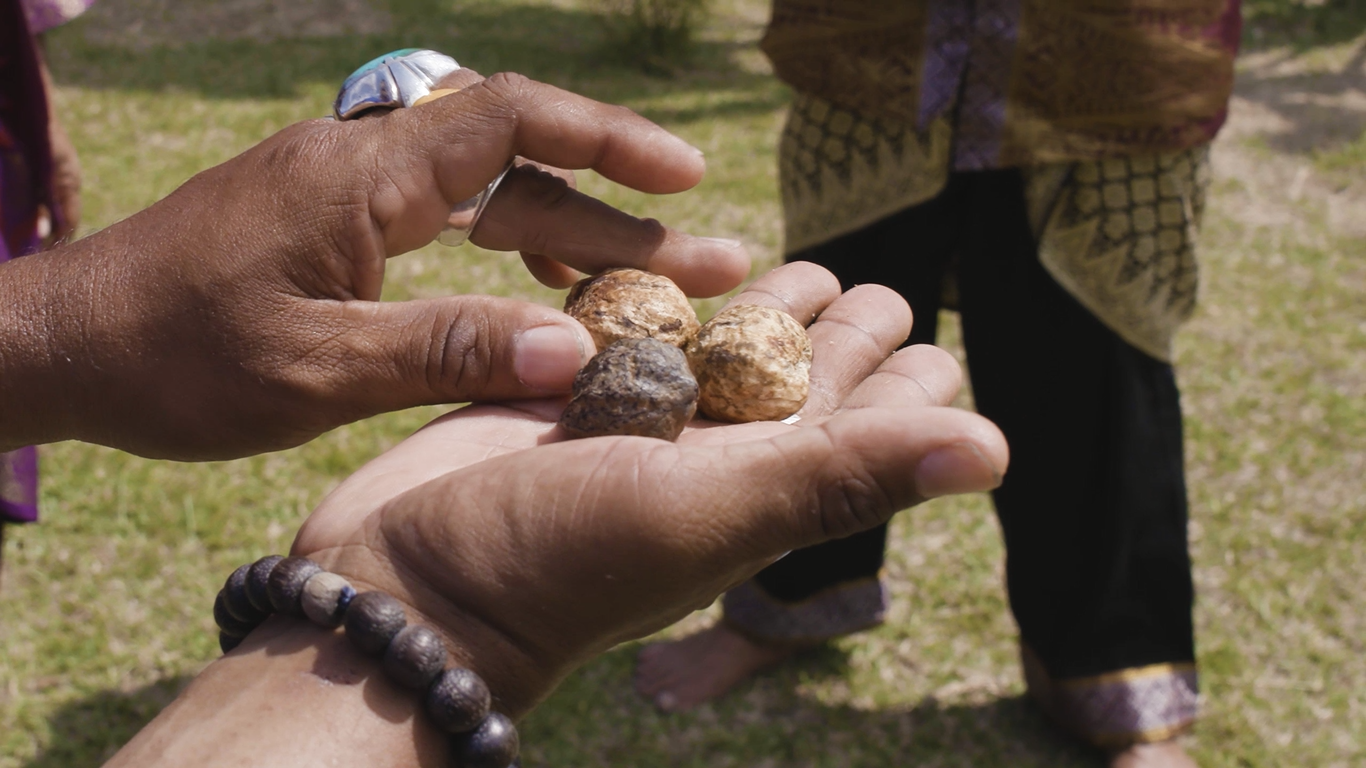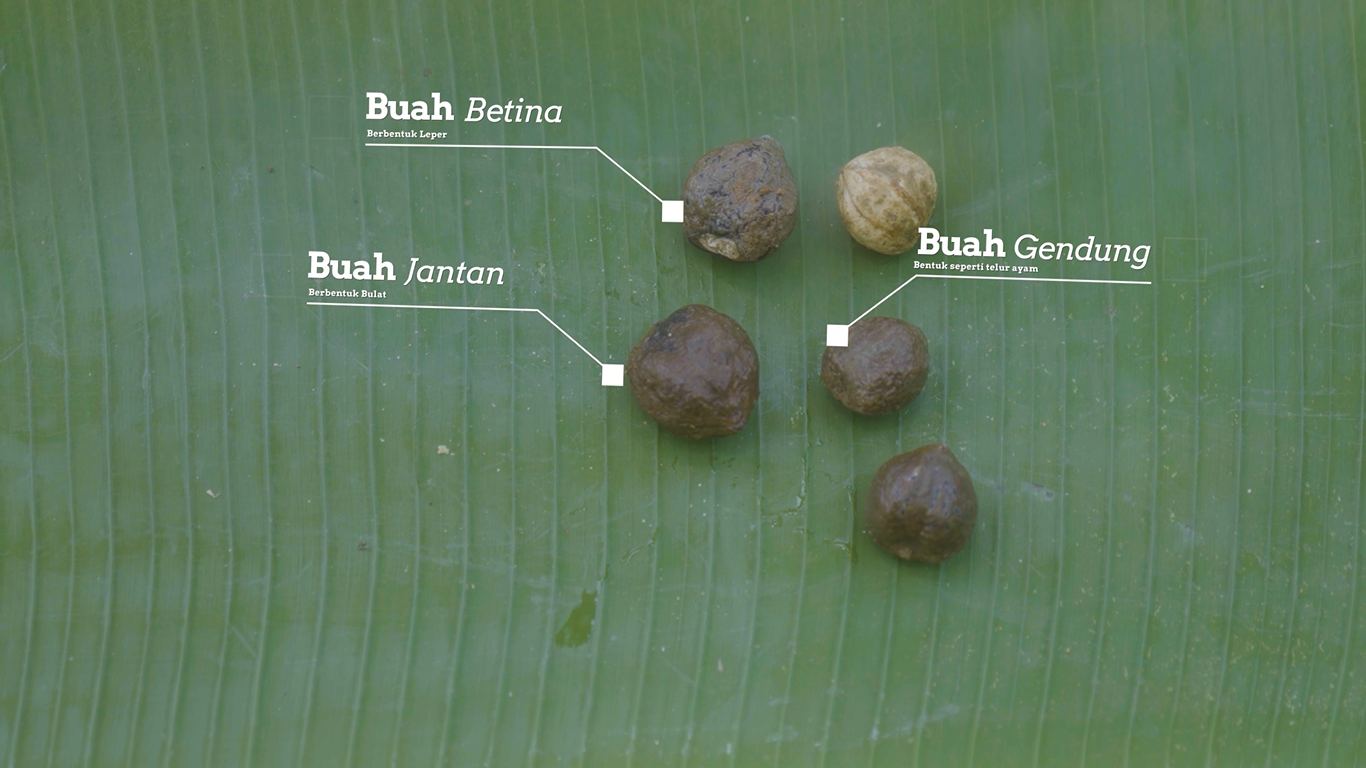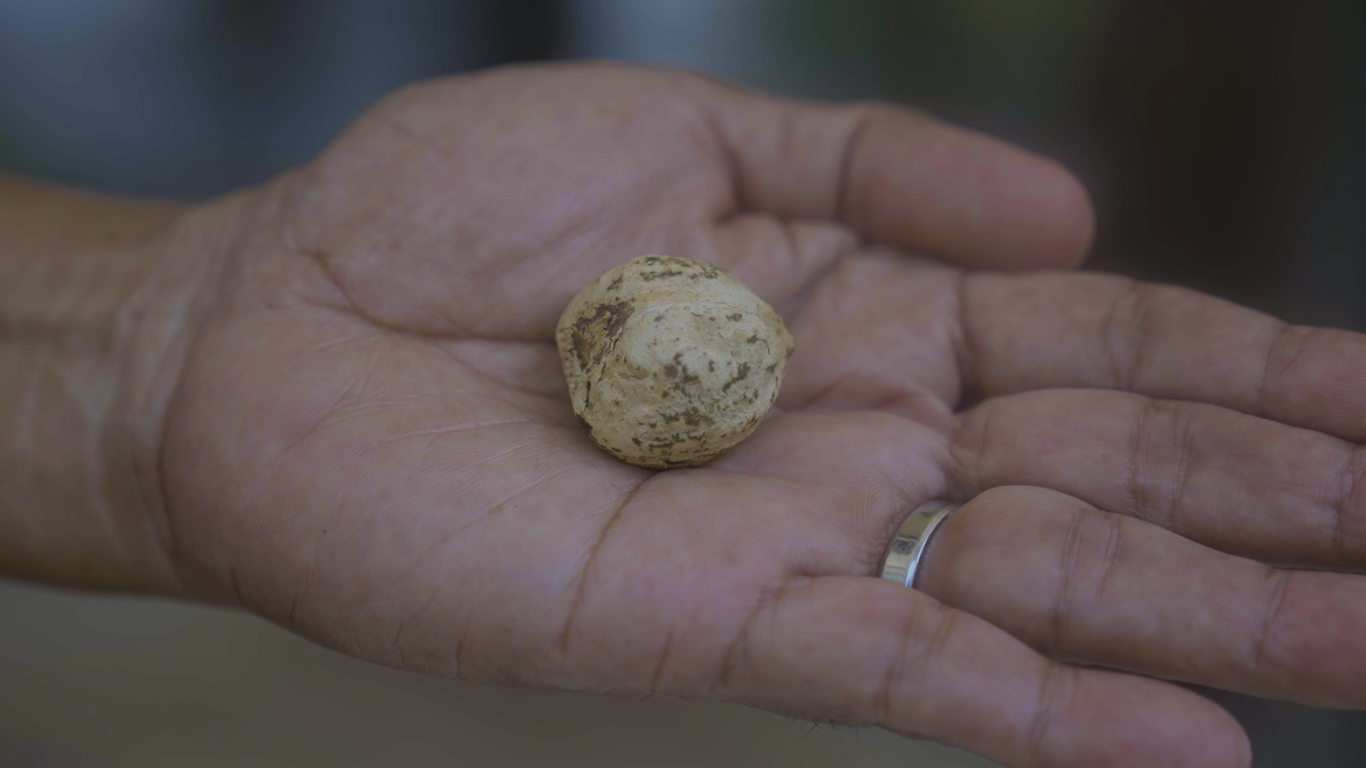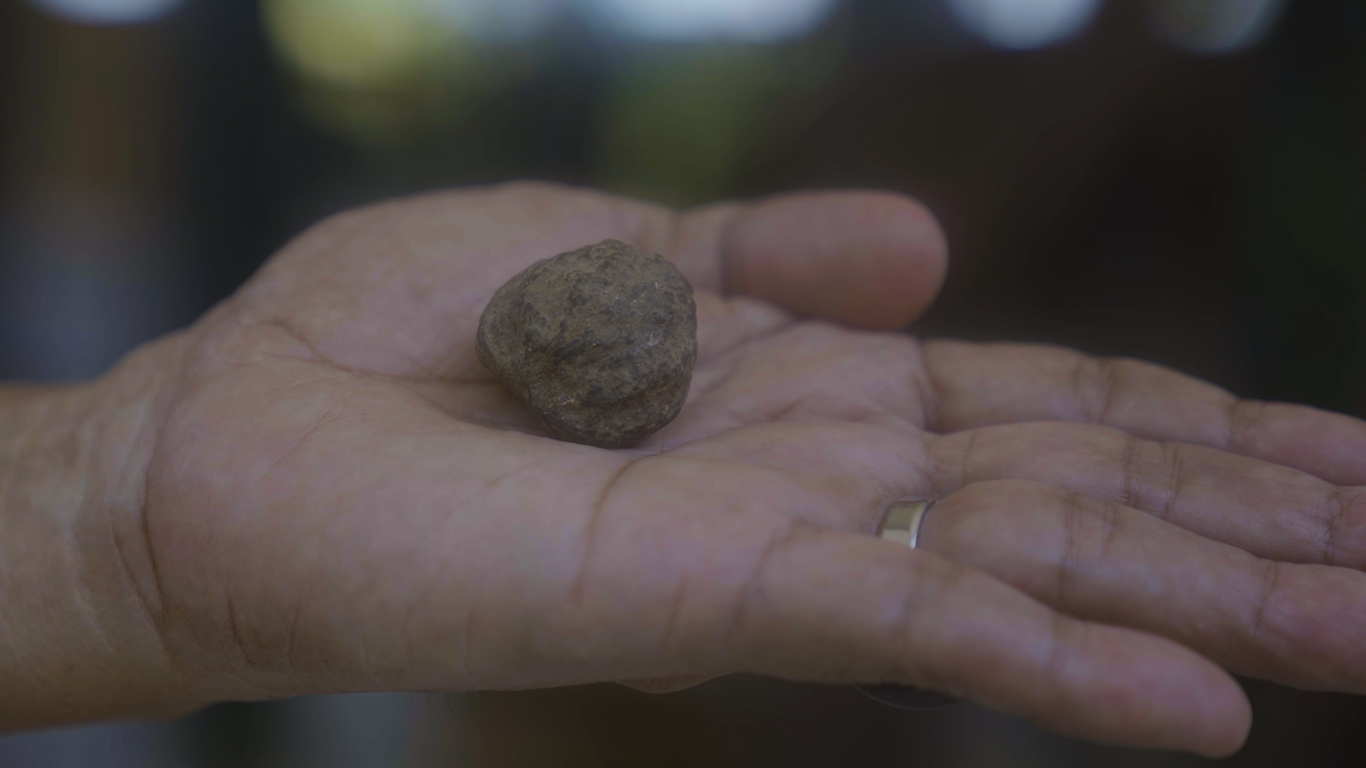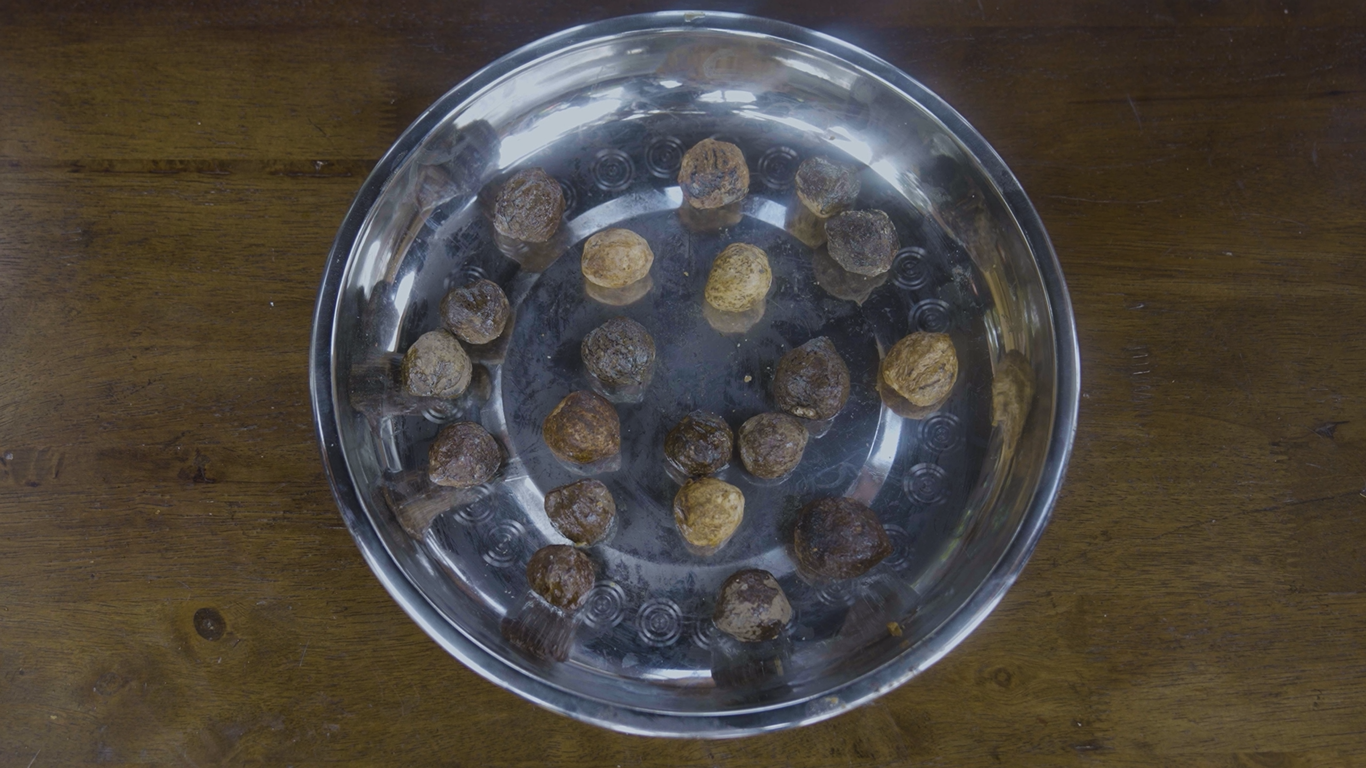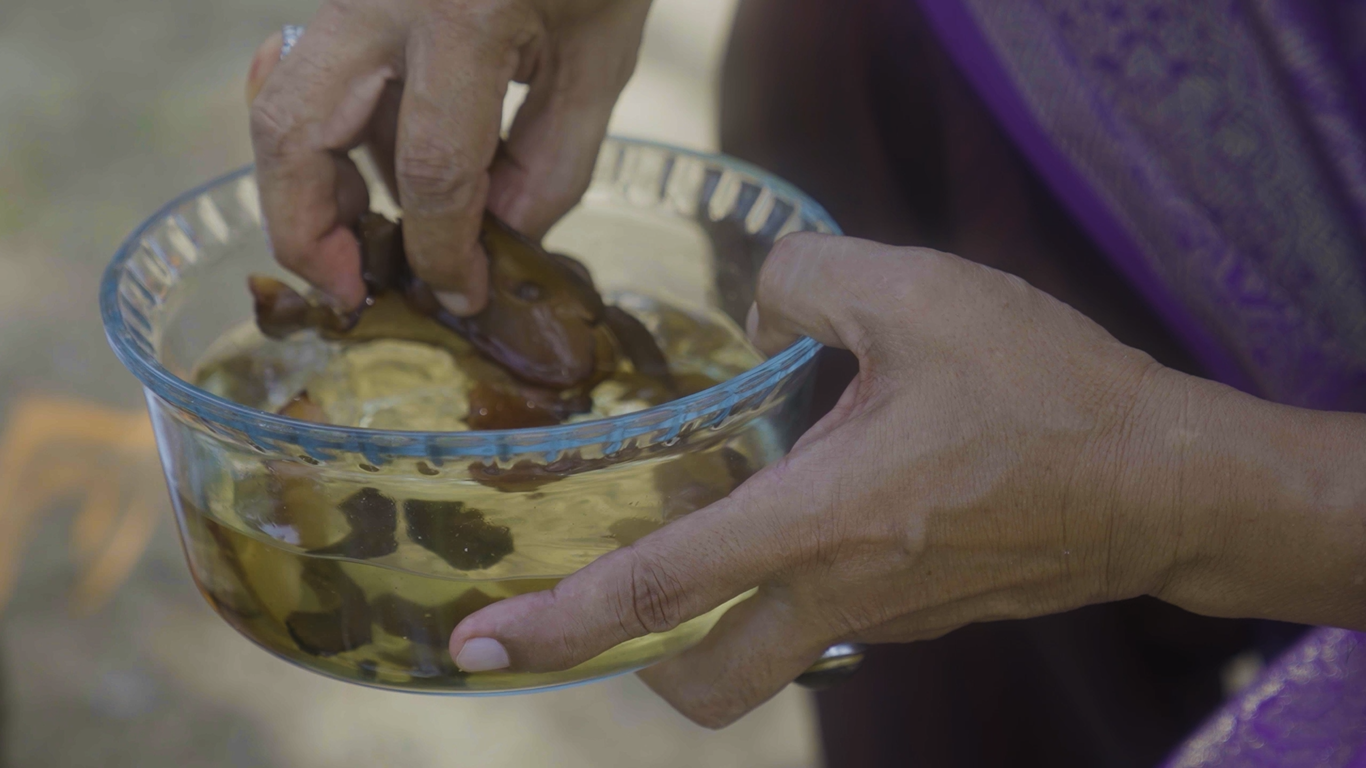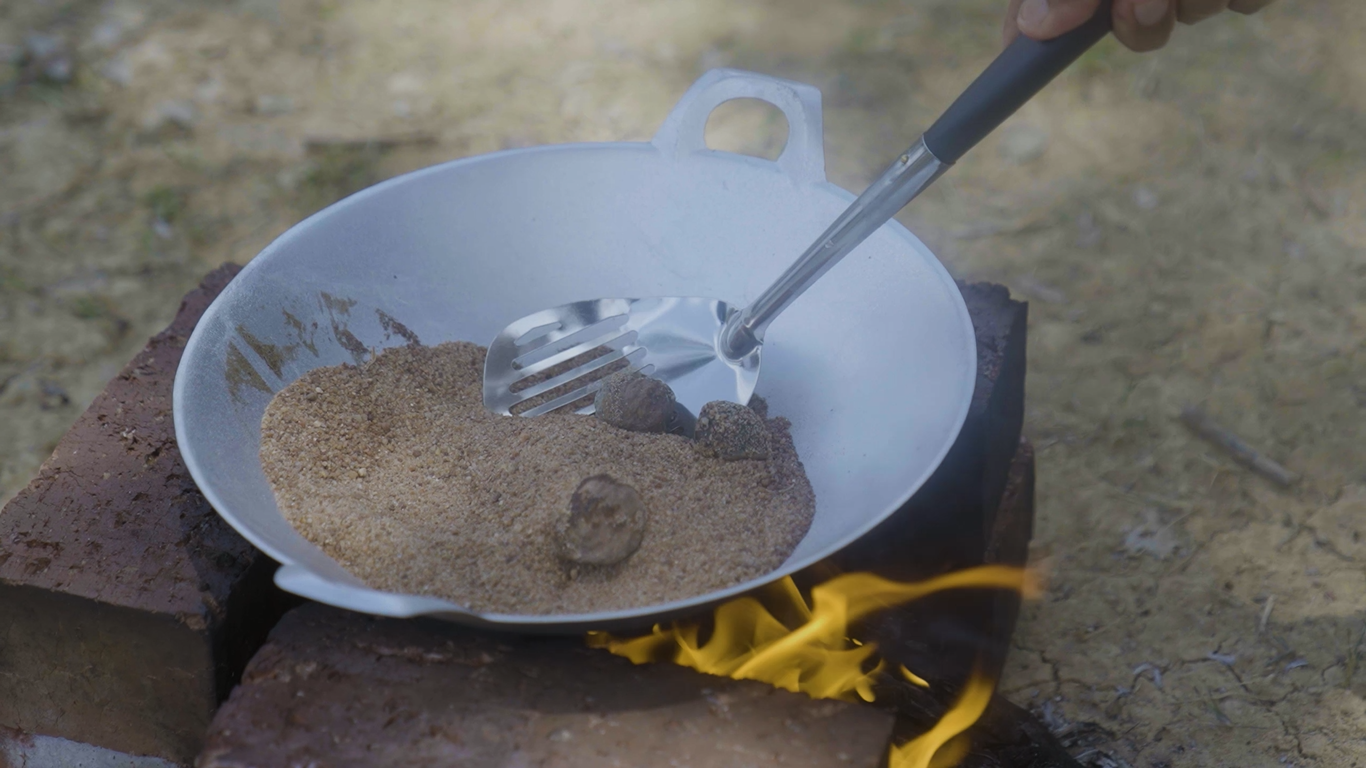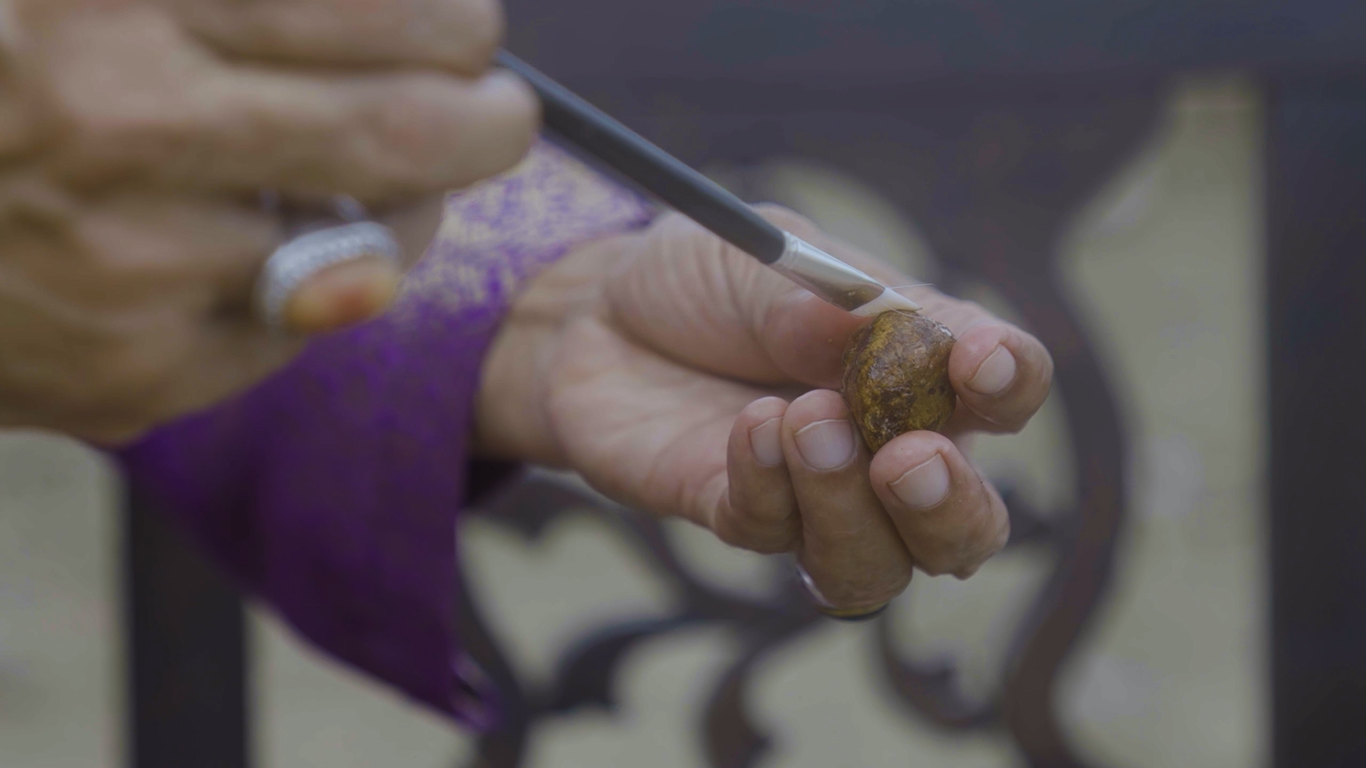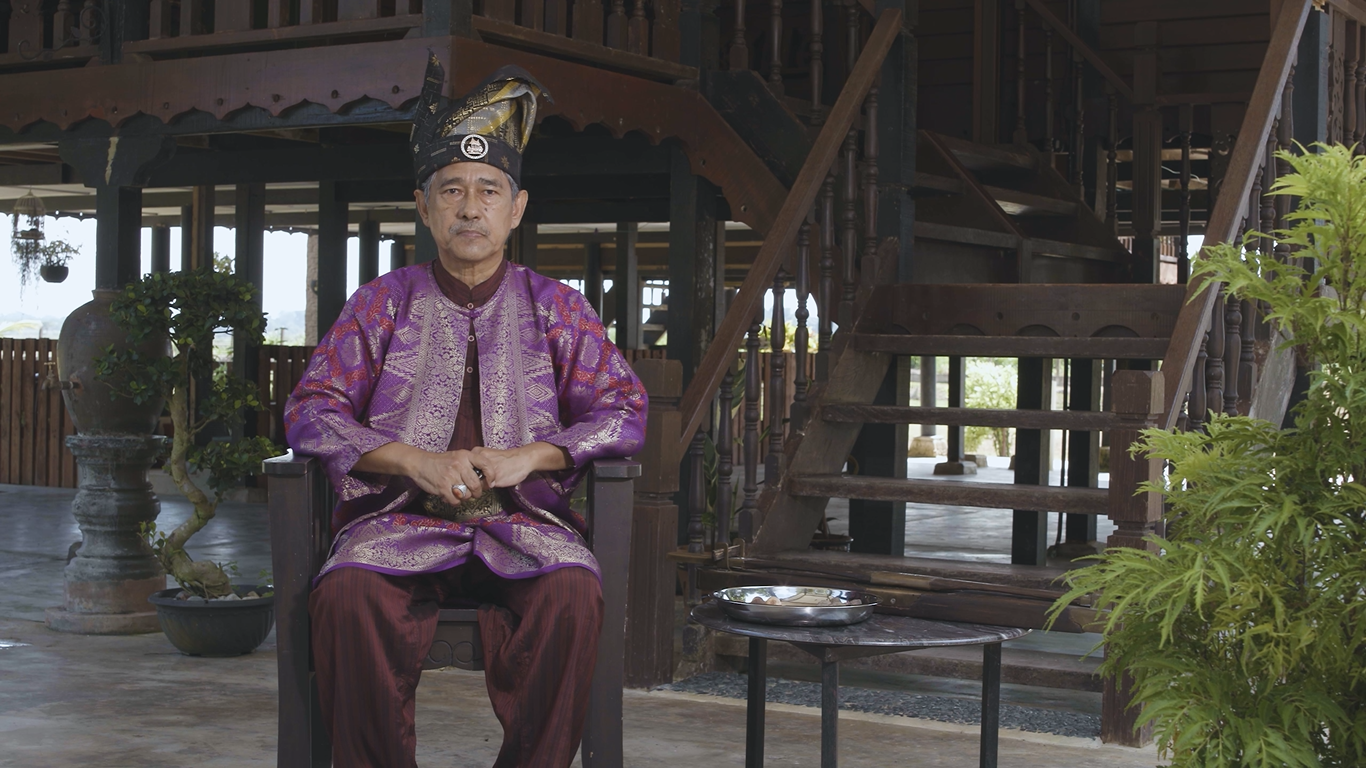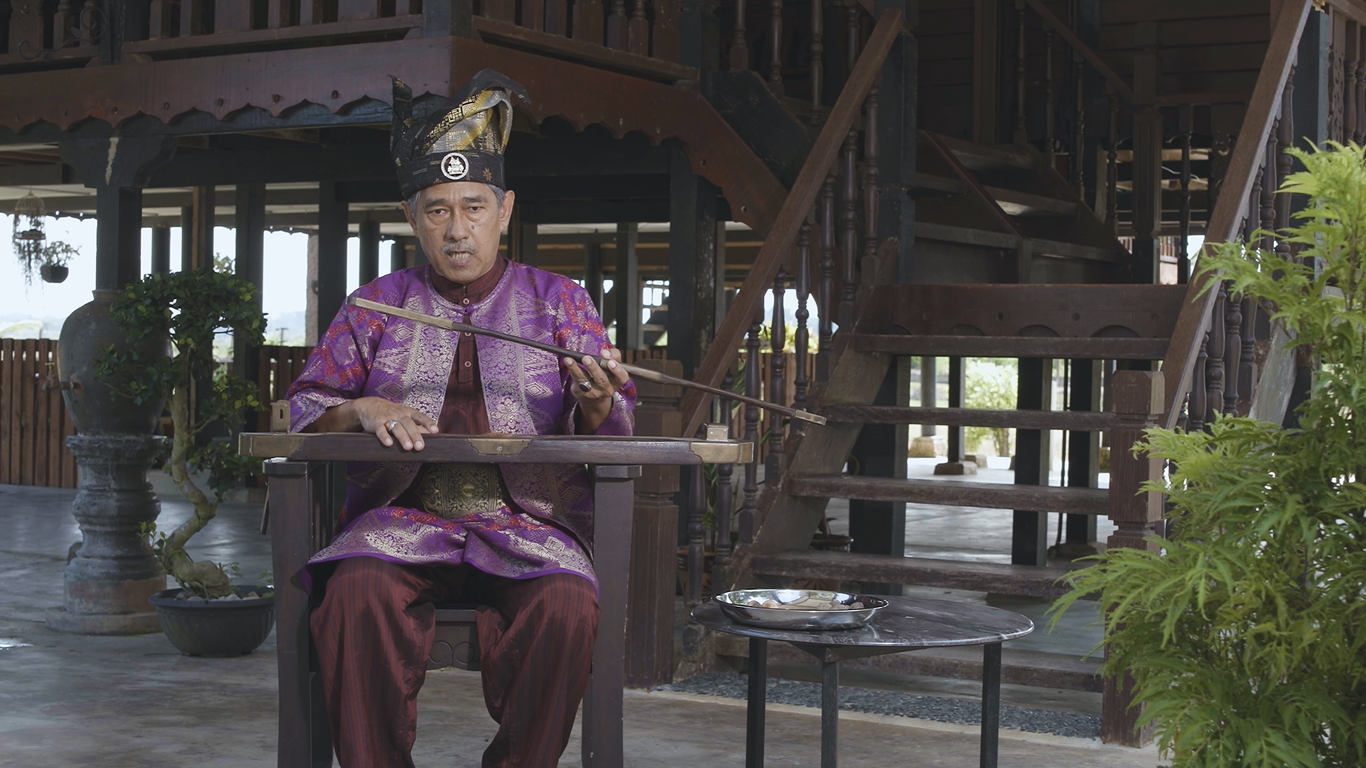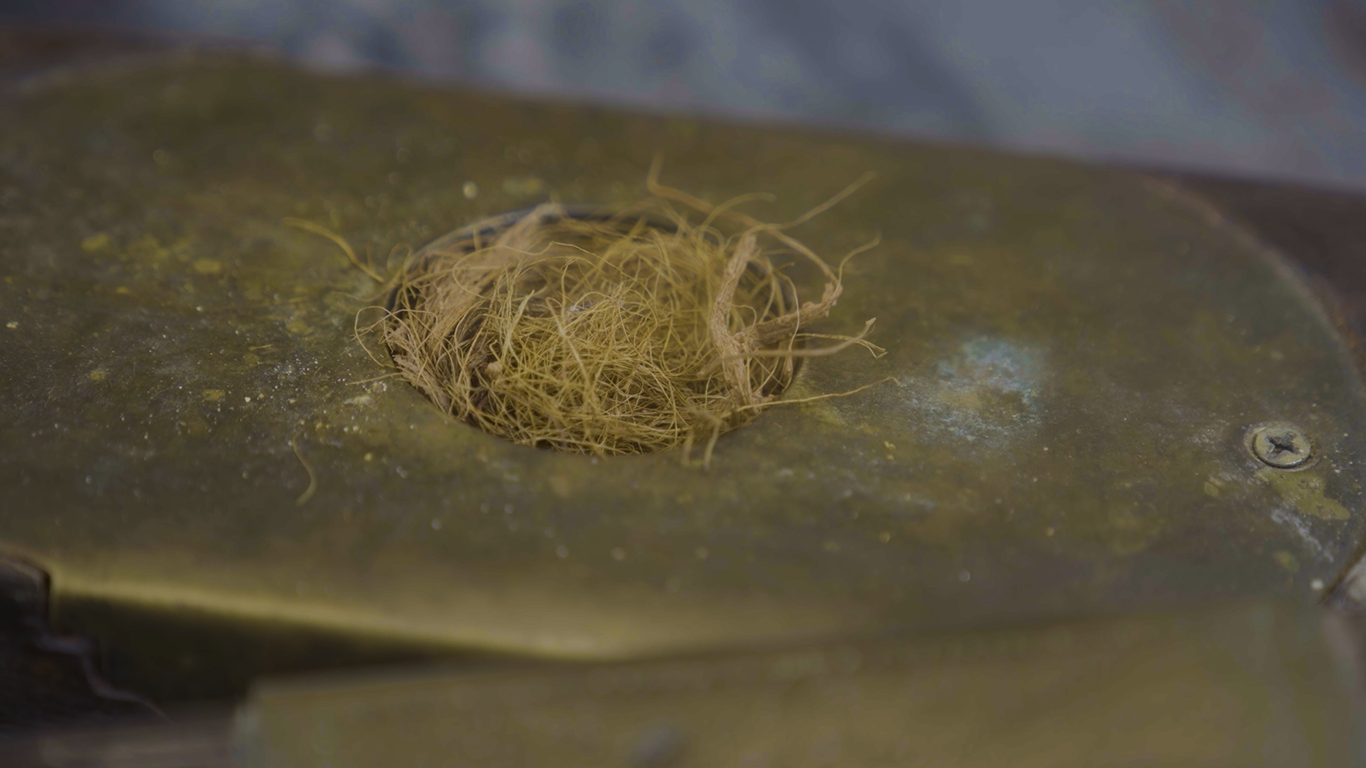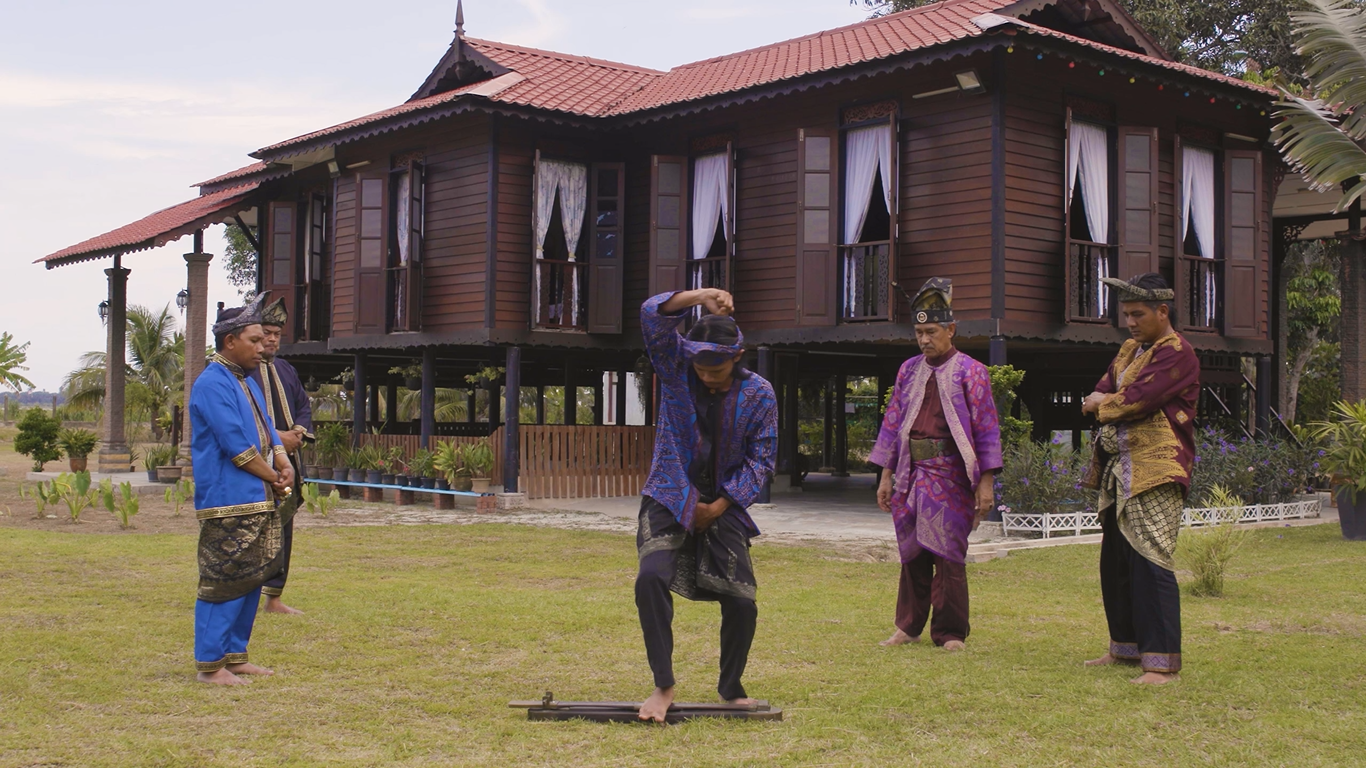ARTS AND CULTURE INFORMATION GATEWAY
Immerse yourself in the colorful world of art and culture! From traditional heritage to contemporary works, discover uniqueness that reflects the nation's identity and identity
PERMAINAN TRADISIONAL HENCANG BUAH KERAS
Picture
28
Video
Available
Today's Visitor
2
Number of Visitors
107
Introduction and history
Hencang Buah Keras has been played for hundreds of years. ‘Hencang’ means crushing, and buah Keras, a candlenut. The players need to crush the candlenuts, the main item of the game.
Initially hencang buah keras was only to the pleasure of palace courtiers, played exclusively by them. But later, they invited the common folks to play on the palace grounds, thus the game popularity spread to all social strata. Adding to the merriment, it is also played along with dances. The dances can be Gamelan, Labi-Labi, Inai and Piring. It is also performed along with the martial art silat and drums.
Playing the game, the courtiers do not crush the candlenuts. Instead, the crushers were the warriors (the common people working for the sultan). The good crushers would be respected by the folks in the region and their names revered.
Historically, hencang buah keras was brought to Pahang by Kraeng Agang Jene Muhammad Naziruddin, more known as Keraing Aji (Tok Tuan), a Bugis nobleman and warrior from Makassar, Sulawesi, Indonesia. The Bugis migrated to Pahang after the Dutch capture of Makassar in 1669. Keraing Aji strongly opposed the Dutch and fought to drive them out of Makassar. Hence, he and his followers were arrested by the Dutch and sentenced to exile in Capetown, South Africa.
On the voyage to Capetown, Keraing Aji escaped to Muar, Johor and then moved to settle in Kota Tinggi, Johor. After a while, he sailed to Endau and stopped there to collect water. He then continued his journey to Telok Kandang, Kampung Pulau Jawa, Pekan, Pahang. Feeling safe there, he stayed for ten years at Telok Kandang. In 1722, Keraing Aji moved to a new settlement in Pekan, naming it Kampung Mengkasar, after the name of its founder who was from Makassar, Sulawesi, Indonesia.
HENCANG BUAH KERAS PLAYERS’ COSTUME
The players will wear the full Malay national costume when playing. Their clothes are made of cotton or kain tenun Pahang (Pahang woven cloth) of any colour.
EQUIPMENT/MATERIALS TO PLAY
The Nut Clamp
The clamps are made of two layers of hard wood, which could be the sena, merawan and meranti. The top layer wood, the 'clamp', is made of an easily bent wood called nibung while the bottom layer, the 'bearing', is made of hard wood and clay. The important parts of the clamps are coated with metals such as copper and tin.
A copper-plated hole is bored in the center of the clamp. Two nuts will be placed on top of each other in the hole for crushing. The clam is placed in such a position that it does not break when pressed.
HOW TO PLAY
The game is played by two teams where each team consists of two crushers. It too can also be played between individuals. The team having strong crushers or having very hard nuts (which cannot be broken) will win the game.
Berbalok - Checking The Candlenuts
Both teams or both players will exchange their nuts for detailed examination. They examine the size of the nuts, which should be the same to fit each other when placed on top of each other in the hole. If there the nut is defective or their sizes are not matched, a new nut is required. The checking is also to avoid cheating.
Drawing Lots
(i) Both parties will draw lots by tossing the candlenut. This is to decide whose nut to be placed on top or at below in the clamp. The drawing of the lots is done by holding both nuts in left and right hands, shaking and then throwing them to the ground. The nuts falling on their backs will be placed at the bottom, while the ones falling upwards will be placed on top. The players often hope that their nuts fall flat and placed at the bottom as generally, the bottom nuts are able to withstand the crushing, and thus winning the game.
(ii) The lot drawing is also conducted by putting the nuts into a sekoi, shaking and pouring them into a nyiru. This kind of lot drawing was done in Kampung Padang Rumbia, Pekan in the early 1960s.
Installing
Installing is to place the two nuts (to be crushed) into the clamp. After inserting enough padding, then the two nuts are placed on top of each other, where the chest part of the top nut is placed on the chest part of the bottom nut.
Once both teams are satisfied, the retaining iron is installed or locked at the end of the clamp. If any party is not satisfied, let’s say, the nuts are not paired correctly, the clamp has to be opened, and the nuts will be paired again. Once both parties are ready, the crushers, cheering enthusiastically, hit the middle part of the clamp with a martial arts step, a display of unique three-style step using the strength of one’s legs and heels.
The crushers may also move in various styles and steps. Their artistic movements and dances demonstrate their teachers’ expertise in one (or more) of the following: Cekak Martial Arts, Terlak Martial Arts, Pulut Martial Arts, Pencak Martial Arts or Sendeng Martial Arts.
If the candlenut at the top breaks, it is called 'greeting' and if the bottom one breaks, it is called 'diving'. While if both hard fruits break it is called 'baloi'. The crusher is deemed responsible if both nuts break.
However, if the two nuts do not break, which is a 'galang', a second crusher is required to crush. If the nuts are still not broken, this second crusher will be replaced with a third one. In this case, the crusher will also be blamed and perceived as less skilled, less energetic or less prepared mentally and physically to compete.
The aesthetic value of this game lies in the role of the hard nut smasher since their various dances, movements and art moves to shake hard fruit will be watched enthusiastically. Here we see that the art of silat is essential in traditional games of the Malay community in this country.
Preparing The Candlenuts
The nuts for the game are selected from well-bred trees. There are two ways to make the nuts durable.
First, the nuts are soaked in stagnant water (collected from the kitchen and household activities water) for several days until they turn black. Then, they are washed and stored before being played.
The other way is that the nuts are soaked in the juice of buah Gelugor (Garcinia atroviridis,) a rain forest native tree, for a week. It will then be cleaned and dried in a shady place. Once dry, the nuts are dry fried with sand on a medium heat to avoid breaking. In addition, it can also be grilled for the same purpose. Once the hard fruit is cool, it will be coated with the kabung paste, eventually the nut turns red. In the game, only the same colour nuts will be played, for instance, if a team’s nut is black, the opponent’s should be black too.
Players will name their nuts (or given nickname) in order to scare the opponent.
Cushioning The Nuts
The nuts are placed in the clamp cushioned with soft materials such as coconut coir, ijuk kabung, kekabu or cotton. These materials are clean and only their soft part is used. They will be carefully placed into the nut holes so that both nuts do not rub against each other. Both competing parties must be satisfied with the position of their nuts in the hole.
Reference Source
i. Bahan Bacaan
Norazit Selat. (1996). Pahang
dahulu dan sekarang. Pahang. Kuala Lumpur: Persatuan Muzium Malaysia.
Mazlan Hashim, Mohamad Fahmi Che Mit. (2020). Manuskrip Hencang Buah
Keras. Kuala Lumpur : Jabatan Kebudayaan dan Kesenian Negara (JKKN).
Mohd Mokhtar bin Bakar.
(2022). Ekspedisi Berakit Sungai Pahang 2002. Pahang : Perbadanan Kemajuan
Bukit Fraser (Pelancongan Pahang).
Muzium Pahang. (2022). Hencang Buah Keras: facebook: muat
turun pada 19 Januari 2022 daripada
https://ms-my.facebook.com/MuziumPahangOfficial/posts/255725163359000
Faces
of Pahang. (2019). Sejarah Dan Kebudayaan
Permainan Tradisi Pahang – Hencang Buah Keras: facebook:
muat turun pada 4 Januari 2019 daripada
Location
State JKKN Contact Information
Puan Norlelah Abd Karim
Cultural Officer
Jabatan Kebudayaan dan Kesenian Negara, Pahang
Kompleks JKKN Pahang
Lot 57100, Jalan Teluk Sisek,
25000, Kuantan,
Pahang Darul Makmur
09-517 8466
Use the form below to contact the Informant/Figure/Editor/Researcher directly. We will respond to your inquiry as soon as possible!

 Pertubuhan Perguruan Seni Pencak Silat Sangkar Rewana Pahang
Pertubuhan Perguruan Seni Pencak Silat Sangkar Rewana Pahang

